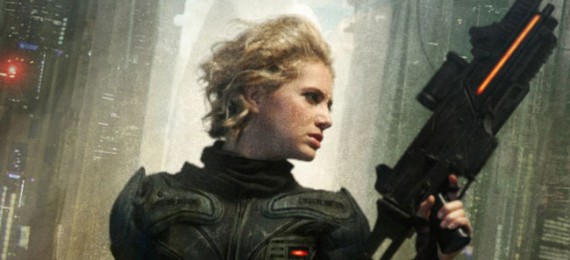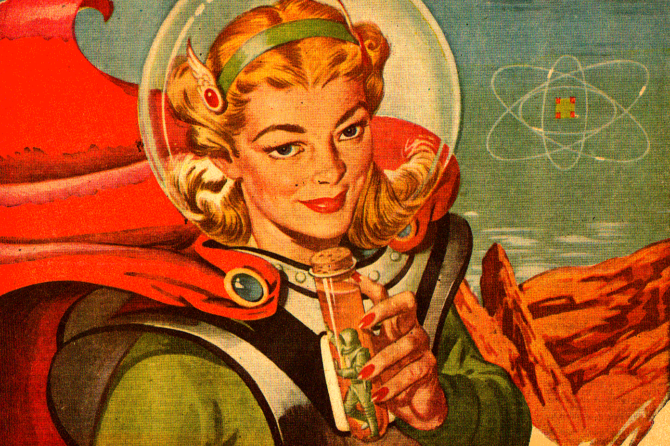There was a time when the use of photographs as cover images was a very rare thing. Book and magazine covers in the early part of the twentieth century required artwork for their cover images. Aside from some obvious exceptions like LIFE and other news magazines, most publications hired artists to provide cover pictures or interior black and white illustrations.
It seems odd to us today to see an old, turn-of-the-century Sears catalog full of hand drawn line art depicting the products for sale rather than the glossy color photographs we are used to seeing today. Even magazines like Cosmopolitan and Vogue regularly hired artists to provide cover and interior illustrations. In the earlier part of the twentieth century seeing a photograph on the cover of a book or magazine was a rarity.
Paperback books sported full color art on their covers for the longest time. Indeed, a paperback cover with a photograph in place of artwork was considered a novelty. Slowly, however, photographic covers became the norm. The last hold out for art on paperback covers was in the genre of fantasy and science fiction. It was obvious that you couldn’t photograph the things that were regularly depicted on fantasy and science fiction covers. You had to have someone paint them.
That was before Photoshop.
 With the advent of the digital age and the development of computer aided design and computer generated imagery, the supremacy of the cover artist was slowly being undermined. As mainstream books began using less and less imagery and more photography, so too did the genre books.
With the advent of the digital age and the development of computer aided design and computer generated imagery, the supremacy of the cover artist was slowly being undermined. As mainstream books began using less and less imagery and more photography, so too did the genre books.
Today the big publishing houses will still employ cover artists to create fantastic imagery but more and more often they are turning to photographers and digital artists.
This has given rise to the hybrid creators — artists who are adept at photography and at digital manipulation.
Scott Grimando was born in 1968 in New York. He is a classically trained artist. He studied at Nassau Community College and Stevenson Academy of Traditional Painting. He studied under Harold Stevenson, one of the few students of Norman Rockwell. He is also a photographer. He has been shooting his own reference since he was a teenager. Over time those two disciplines have merged. Grimando creates fantastical images using a combination of photography and art blended in the digital medium of Photoshop.
“Artists have used photographic reference since photography was invented.” Grimando said in a recent interview. “With the development of digital cameras I was able to develop my photography skills much more quickly and I started shooting professionally. The heavy use of a photographic style in my illustrations is dictated by trends in the publishing industry. I always felt a little stupid trying to fake a painted look to my digital work anyway. It’s so much more pure this way.”
 Chris McGrath was born in the Bronx in 1972. He received a degree from The School of Visual Arts in 1995, and in 2001, he started doing illustration professionally. Combining his art skills and his talent as a photographer, McGrath blends the photographic images to create a composite image. “Once a sketch is approved, I find models, costumes, and book a photo shoot (which I do myself).” McGrath said in a recent interview. “Then, once I have everything, I get to work at home using Photoshop and my Wacom tablet. Everything is the same as setting up a traditional oil painting, using the same methods I was taught in school.”
Chris McGrath was born in the Bronx in 1972. He received a degree from The School of Visual Arts in 1995, and in 2001, he started doing illustration professionally. Combining his art skills and his talent as a photographer, McGrath blends the photographic images to create a composite image. “Once a sketch is approved, I find models, costumes, and book a photo shoot (which I do myself).” McGrath said in a recent interview. “Then, once I have everything, I get to work at home using Photoshop and my Wacom tablet. Everything is the same as setting up a traditional oil painting, using the same methods I was taught in school.”
McGrath is most famous for his series of cover images for Jim Butcher’s Harry Dresdon novels but he has done covers for many different science fiction and fantasy cover before settling into the niche of Urban Fantasy illustrator.
 Dave Seeley is another artist whose process involves the heavy use of photography and Photoshop. He has done a multitude of different types of illustration from advertising to editorial imagery to book covers.
Dave Seeley is another artist whose process involves the heavy use of photography and Photoshop. He has done a multitude of different types of illustration from advertising to editorial imagery to book covers.
Seeley uses a combination of photography, stock photography and computer manipulations to create a composite image. He uses a technique which he refers to as “Frankensteining” together a single image using bits and pieces of photographs. The process is fascinating and he outlines some of the techniques that he uses on his website.
Once he has the image with which he is fully satisfied, Seeley prints it out in a large format and paints over with oil paints. The results are an unusual blend of the photorealistic and the traditionally painted. The final images have a unique look which is one of the things that keeps Seeley’s work in high demand.
Next week I will continue on the topic of blending photography with traditional art and I will try to assess the industry trends that have led us here.











